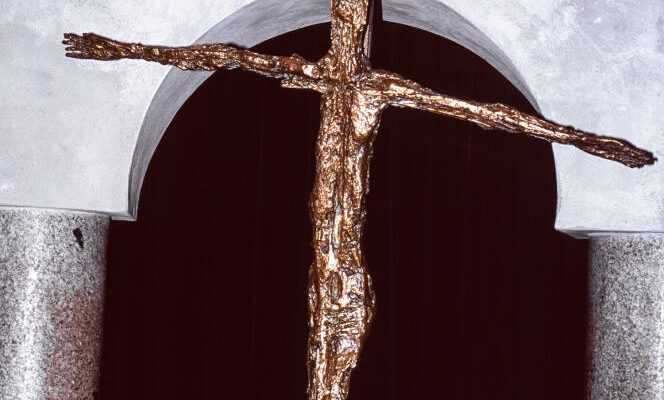For connoisseurs of the artist Germaine Richier, the exhibition which opens on 1er March at the Center Pompidou, in Paris, has the scent of victory. And recognition. Late, certainly, but deserved for this visual artist who died in 1959, at the age of 56, an unclassifiable figure, indifferent to the artistic trends of the post-war period. In Beaubourg, the bronze sculptures of the heiress of Auguste Rodin and particular pupil of Antoine Bourdelle are thus presented. And especially his Christ of Assya crucifix modeled in bronze dating from 1950, where the body merges with the cross and to which an entire room is dedicated.
When it was created, this work aroused a very violent controversy and divided the Church. Traditionalists have called it “ blasphemous », campaigns of the catholic press castigated it. A case reported in The Hurricane (Fage editions), the biography of Germaine Richier just published by her great-niece, Laurence Durieu.
Marriage of the sacred and modern art
But this sculpture is also the testimony of a unique artistic adventure. That of the church of Notre-Dame-de-Toute-Grâce on the plateau of Assy, in Haute-Savoie, which has seen the sacred mingle with the most avant-garde modern art. From the 1930s, the small town, nestled at an altitude of 1,000 meters facing Mont Blanc, was a sunny and renowned sanatorium, which had around fifteen treatment centers.
The best known is Sancellemoz, where the Nobel Prize in Physics Marie Curie spent her last days in 1934. The composer Igor Stravinsky was treated there. “Literature, theatre, music paraded in Sancellemoz, says Françoise Eiberlé, president of the Association Forum d’Assy. There were elevator operators in front of the elevators, three nightclubs, concert halls, a cinema… It was the high life! »
In order not to cross the local populations, the tuberculosis patients arrived by night train. It was for the patients of the sanatorium of Sancellemoz that Canon Jean Devémy launched in 1937 the construction of a church in the form of a chalet, Notre-Dame-de-Toute-Grâce, to which he devoted all his ambition.
Matisse, Bonnard or even Chagall
With the help of the artist and Dominican monk Marie-Alain Couturier, he will make his modest mountain church the setting for the revival of sacred art in the 20th century.e century. At Notre-Dame-de-Toute-Grâce, the two ecclesiastics brought together the works of the greatest masters of the time, which they visited in their workshops in Montparnasse, in Paris, and elsewhere, in order to order them without take into account their religious convictions or their political opinions.
You have 54.09% of this article left to read. The following is for subscribers only.
